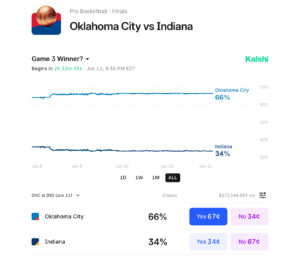Marimekko, the iconic Finnish design house founded in 1951, has long stood as a beacon of bold expression, innovative color palettes, and unshakable optimism. But behind its most recognizable aesthetic—a daring explosion of florals, geometries, and painterly abstractions—is a story rooted in family, feminism, and the transcendence of art through time. At the heart of this story are two women: Maija Isola, the maverick textile designer who created more than 500 prints for Marimekko, and her daughter Kristina Isola, who extended that legacy into the 21st century.
Maija Isola: The Spirit of Freeform
Born in 1927 in Arolammi, Maija Isola’s entry into design was anything but conventional. Initially studying painting at the Helsinki Central School of Industrial Arts, her early work was driven by an abstract painter’s sensibility, which later translated seamlessly into textile form. When she joined Marimekko in the early 1950s—just as the brand was beginning to take shape under Armi Ratia—Isola brought with her a defiant creative independence.
Her breakthrough design, Amfora (1952), already hinted at the trajectory of her work: raw, gestural, and deeply influenced by nature, classical forms, and the abstraction of modern art. Over the decades, her creative output at Marimekko blossomed into hundreds of patterns, ranging from the lush and lyrical to the minimal and geometric. But the defining moment came in 1964, when she defied a company-wide directive that banned floral motifs and created Unikko (Poppy)—a now-iconic print that became Marimekko’s global signature.
Isola’s patterns were not confined to fashion; they spilled into interiors, homeware, and even the psyche of post-war Finland. As Finland struggled to establish a modern identity distinct from Soviet and Scandinavian influences, Marimekko’s prints—especially Isola’s—offered a sense of joy, rebellion, and empowerment. Isola herself traveled widely—to Algeria, Italy, the United States, and beyond—infusing her work with global visual references long before “multicultural design” became a talking point.
Kristina Isola: The Custodian and Innovator
Born in 1946, Kristina Isola grew up surrounded by color, canvas, and fierce independence. While Maija’s designs were bold declarations of autonomy, Kristina’s approach was marked by deep stewardship and subtle adaptation. A trained textile designer herself, Kristina officially joined Marimekko in the late 1970s, working closely with her mother to archive, adapt, and reimagine Maija’s work for contemporary applications.
Rather than attempting to outshine her mother’s legacy, Kristina took a more fluid role—often described as a bridge between generations. She was responsible for reintroducing and reinterpreting older Isola patterns with updated colorways, ensuring their relevance in an increasingly globalized design market. Her work maintained a reverence for the past while adjusting for the demands of modern manufacturing, licensing, and mass distribution.
Some of Kristina’s most valuable contributions include reworking Unikko for diverse products like umbrellas, ceramic mugs, and even global fashion collaborations. Under her supervision, Maija’s work experienced a renaissance, particularly in Japan and the United States, where the brand experienced surging popularity in the early 2000s.
However, Kristina’s career was not without controversy. In 2013, a plagiarism scandal erupted when one of her designs was found to be too closely derived from a Ukrainian artist’s work. The incident led to her resignation from Marimekko, raising complex questions about authorship, homage, and the ethics of legacy stewardship. While painful, it underscored the tension inherent in carrying a creative torch: what belongs to heritage, and what must evolve?
The Mother-Daughter Dynamic: Connection and Contradiction
The relationship between Maija and Kristina was creatively fruitful but emotionally complex. Both fiercely independent and immensely talented, they approached design from different poles—Maija as the intuitive artist, Kristina as the methodical archivist and interpreter.
Yet their dialogue across decades exemplifies something rare in the design world: a true generational partnership. Where many fashion houses struggle to reconcile tradition with innovation, the Isolas managed to keep the conversation alive—each iteration of a Marimekko print acting as a new stanza in a poem that began in post-war Finland and still echoes today.
Marimekko’s Cultural Impact Through the Isola Lens
To understand the significance of Maija and Kristina Isola is to understand Marimekko not merely as a brand, but as a cultural phenomenon. In the 1960s, Jacqueline Kennedy famously wore Marimekko dresses during her husband’s presidential campaign—broadcasting Finnish design onto the world stage. In the 2000s, Marimekko’s prints, revived in connections with retailers like Target and Uniqlo, became symbols of cheerful minimalism embraced by millennials and Gen Z alike.
What the Isolas provided Marimekko was not just aesthetic consistency, but emotional resonance. In an age where consumerism often feels ephemeral, Maija’s bold brushstrokes and Kristina’s careful curation created a sense of permanence—of legacy not as stasis but as transformation.
Moreover, their work contributed to a feminist discourse in design. At a time when women were underrepresented in industrial and fashion design, Maija’s rise within Marimekko—and her refusal to compromise creative freedom—set a precedent. Kristina, navigating a different terrain of brand management and globalization, continued that legacy under the weight of expectation and scrutiny.
A Legacy in Bloom: Relevance Today
In 2021, Marimekko celebrated its 70th anniversary, and the Isola name was central to every tribute, exhibit, and editorial. While Maija passed away in 2001, her legacy is firmly entrenched in design museums, academic studies, and daily life—from throw pillows to iPhone cases. Kristina, despite stepping away from the company, remains a vital figure in Finnish textile history.
As sustainability and cultural authenticity take center stage in contemporary design discourse, the work of Maija and Kristina Isola has renewed relevance. Their commitment to artistic integrity, natural inspiration, and pattern-making as both aesthetic and emotional labor offers lessons for young designers navigating the noise of digital aesthetics and trend cycles.
Patterns That Speak Across Time
From the rebellious poppies of Unikko to the quiet editorial stewardship of Kristina Isola, the story of Marimekko is inseparable from the Isola name. It is a story of color as resistance, of art as continuity, and of family as both anchor and flight.
No comments yet.








